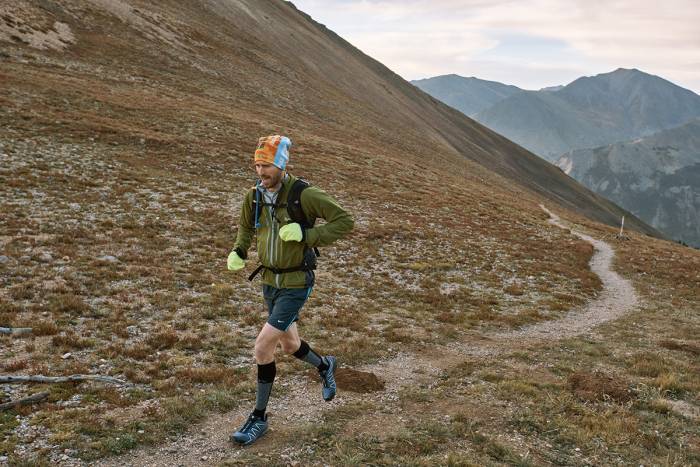Running an ultra distance in the mountains, solo and not affiliated with an event, was a challenge months in the making for our Colorado contributor. Here, Zach Smith outlines his training and on-course methods used to run strong for 30-plus miles in the high alpine of Colorado’s Collegiate Peaks.

Outdoor athletes and adventurers often employ unconventional methods to train for tough outings, long trips, and high peaks. Here in a new column, “One Man’s Method,” we share these strategies for inspiration and to pique creativity when preparing for your own adventures.
WHEN I BEGAN prepping for a high-alpine, unsupported, ultra run in Colorado’s Collegiate Peaks, I had a basic understanding of what it would take. But training for, and successfully executing, a 33-mile run composed of three passes and about 10,000 feet of elevation gain required specific strategies and tactics.
Some I knew already, and some I learned along the way. Here’s how I made it happen.
Find Your Own Mental Preparation
It takes mental toughness and self-motivation to accomplish an ultra-marathon without the help of an organized race.
My best tactic for me was something unusual: I forced myself to run right by my car or exit point during long training runs. Consistently practicing this technique trained my head to stay in the game even when my body thought the run was over.
When I saw my vehicle sitting in the parking lot like a beacon of relaxation as I trotted past it, my body learned to do whatever I told it to do, even when painful.
Train Smart, And Strong
Most people assume I ran more for better training. That wasn’t exactly the case.
Logging big miles is essential, absolutely. But it was equally important to supplement my running with focused strength training.
The beating my body took when ultra-training required hypersensitivity toward injury prevention. Strength training tuned my body to recognize weakness.
I trained two to four times a week at a Crossfit gym in Denver, and I started well before I was running double-digit miles. I advise crushing big climbs and avoiding injury as part of strength training.
Fuel Properly
It’s no secret – liquid is heavy, and will weigh you down in a hurry. If the weight of water is something you don’t want to carry, bring a straw water filter (I like the Sawyer Mini, and at $25 it’s a no-brainer). Drinking from the Mini at stream crossings allowed me to only carry about half a liter at any given time. Less weight equals less fatigue.
Trail food high in fat and protein once again saved pack weight and increased my efficiency. Fatty- and protein-rich foods are also simple: I ate meat-based protein bars (like Epic or Wilde), nuts, tuna packets, and dried fruit.
Bonus tip: Chewable food may be preferable to liquid energy packs. Though liquids/gels accomplish the same nutritional goals, by the end of a long day of running you may want something to chew on. Also, I craved salty foods, not sweets, during long endurance feats.
Navigate Efficiently
I not only studied my map to strategize climbs and descents, but I learned where bail-off points were in case of bad weather or injury.
I also kept the map reachable at all times, tucked into the hip strap of my running pack. To stay on course, keep your compass handy, and look at your map often, particularly on any off-trail sections.
Outfit Effectively
Layer sparingly (weather permitting). It was summer during my run, but cool at the high altitudes. My only additional layer beyond running clothes was a light jacket to block drizzle and wind. Depending on the time of the year and your outing, you certainly may want more clothing in your pack
Other than that, I wore a lightweight long-sleeve shirt, shorts, compression socks, and Salomon Speedcross 4 shoes. I also packed a pair of gloves, a beanie, and a waterproof bag for my phone.
Bring your headlamp and a lighter, and maybe an emergency bivvy and GPS locator beacon if you’ll be out solo. If something goes wrong, and you have to spend the night out there, you need to see the trail and stay warm.
Celebrate Your Accomplishment
Running big miles in the mountains means different things to different people. My 30-mile run made me proud. Your goals, and means, may be different, but these are the methods that helped me accomplish an unsupported ultra through some tough mountains.










